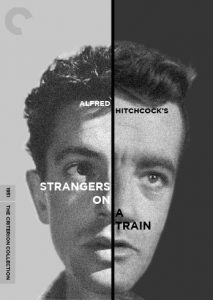The following post is written by Melanie Jackson, author of Death Drop.
Everyone has one. That not-quite-double, that other self. A nicer other self, or a more sinister one.
Possibly a deadly one.
I’ve been exploring the idea of the doppelgänger with three classes of Grade 8 Creative Writing students at Vancouver’s Lord Byng Secondary. It’s part of a mystery unit I’m delighted to be teaching, with the help, advice, brilliant comments and unwavering cup-of-tea support of Byng teacher and English Department head Amy Hughes.
We’re studying the doppelgänger as portrayed in a Hitchcock film, an Agatha Christie short story and the myth of Persephone as it figures in my Orca young-adult mystery Death Drop.
In Death Drop, one of Dante Gabriel Rossetti’s Persephone paintings is on display at a thrill ride based on the myth. Just as Persephone tumbled into the underworld, passengers on a Hellevator-like ride take a 170-foot, gravity-defying plunge into flames. Unlike Persephone, minutes later they return to everyday life. Or stagger, clutching their stomachs, back into it, as the case may be.
The Byng students and I are also going through other elements of a mystery story: from catchy beginning to flawed protagonist to conflict and climax. The kids then go off and write their own mystery stories, which I’ll read and mark. As always I’ll be in awe of the imagination and mischief and sheer enthusiasm of these stories. I think the saying is wrong. Youth isn’t wasted on the young. No way.
It’s the doppelgänger that particularly attracts the students’ interest. That’s understandable. Who wouldn’t be intrigued by the idea that a different self, like you but not, is loitering out there somewhere?
Nice Guy and not-so-nice guy
 In the Hitchcock film Strangers on a Train, Bruno tries to convince Guy to swap murders. Bruno will kill Guy’s troublesome wife; Guy will dispose of Bruno’s wealthy father. Guy isn’t into it––except that he is, very briefly. That’s the intriguing thing about doppelgängers. You may have just a smidgen of that sinister other self. From the DVD cover you can see how Guy (Farley Granger), on the left, resembles Bruno (Robert Walker). They’re two similar but mismatching halves.
In the Hitchcock film Strangers on a Train, Bruno tries to convince Guy to swap murders. Bruno will kill Guy’s troublesome wife; Guy will dispose of Bruno’s wealthy father. Guy isn’t into it––except that he is, very briefly. That’s the intriguing thing about doppelgängers. You may have just a smidgen of that sinister other self. From the DVD cover you can see how Guy (Farley Granger), on the left, resembles Bruno (Robert Walker). They’re two similar but mismatching halves.
The Agatha Christie title I won’t give away, because if you know a doppelgänger is involved, it’ll spoil the twist for you. I won’t give away any Death Drop twists, either, but I think it’s fair game to discuss the Persephone myth—and Persephone’s doppelgänger. We’ve had fun doing this at Byng.
So, who is Persephone’s doppelgänger? You could argue it’s Hades, god of the underworld. Maybe he fell in love with Demeter’s daughter because he sensed some soulmate-type darkness beneath that sunny charm.
Or, you could look to Demeter. No question the goddess of the harvest has a strong maternal bond with Persephone. After all, she does a you-know-what of a job to get her daughter back, convincing Zeus to order Hades to let the young woman go. Mom and soulmate: what more could you want?
And the dubious doppelgänger award goes to…
In our discussions, we decided Persephone’s doppelgänger was—herself! Here’s why.

With Zeus’s intercession, Persephone gets sprung. She starts walking out of Hades. But her gloomy, conniving husband has given her a pomegranate. If she eats from it, she can’t escape. And what does she do? She takes a long, scrumptious bite. Proving that Persephone’s own worst enemy, her wicked other half, her doppelgänger therefore, is Persephone.
Of course, Zeus ends up brokering another deal, whereby Persephone gets to emerge for half the year. Missing Persephone for that other half, Demeter shrugs off her earth-nurturing duties and we’re stuck with cold, barren, plant-killing winter. Which makes Persephone, I guess, a sort of death dopp…
If you’re interested in having Melanie present at your school, please feel welcome to contact her.

